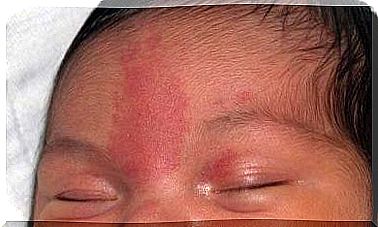Why Is White Noise Beneficial To Everyone?

Thinking about white noise can be awkward. We are not used to associating a certain type of sound with a color. However, colors are used to classify noise or sound.
What is white noise?
The word noise has different meanings. A noise can be an interference, a distortion, or even a non-articulated sensation at the auditory level. This word originates from Latin. Rugitus was the way of referring to a generally unpleasant and inarticulate sound.
White noise is a signal that doesn’t have a certain pattern. It is the result of combining all audible frequencies. These frequencies range from 20 to 20 000 Hertz.
A characteristic of this type of sound is that its frequencies (low, medium and high) have an equal amplitude level at the same time. White noise was given this name because the same phenomenon occurs at the optical level with white light.

white noise and health
There are several studies on the effects of this noise on health, but none of them are conclusive. More studies on this subject are still needed to determine its real effects on the human body.
It is said that white noise contributes to health because it promotes meditation and concentration. Likewise, these noises help fight insomnia by promoting relaxation.
There are studies carried out in animals whose results show that those who were exposed to other noises retained less information in memory compared to those who were exposed to white noise.
The relationship between different types of noise
White noise integrates other noises, does not eliminate them. Since the brain hears thousands of frequencies at the same time, it cannot distinguish any specific noise.
If used correctly, white noise can help to mask certain street noises. Among them are the noise of traffic, neighbors, buildings, or streets under construction. In this way it is possible to rest, study or work, as the level of concentration increases.
There is also another type of noise. Tinnitus is an auditory phenomenon in which some people hear noise that is not produced outside. This sound can generate anguish and insomnia. With the help of white noise this condition can be significantly reduced.
The effect of white noise on babies
The benefits that white noise can bring to babies is a hotly debated subject. Some experts claim that white noise has a relaxing capacity for the little ones, as it integrates or absorbs any other noise that might disturb the child. After a few minutes with this noise, babies can reach relaxation and be able to remain calm.
By increasing the degree of relaxation, this noise helps children to sleep longer, thus helping to reduce stress in babies. Factors such as tiredness caused by activities and movements performed during the day or excessive stimulation can stress a newborn.

Another hypothesis about the benefits of this noise in newborns indicates that the sound environment inside the uterus during pregnancy is very similar to white noise. Therefore, it provides a feeling of pleasure, security and tranquility in the baby.
Another benefit of this type of noise for babies is to calm the crying. This way, it is avoided that they are changed for a long time.
Experts warn that it is important that children do not get used to sleeping with white noise in the background. The use of this tactic should be sporadic and not a norm.
The effect of white noise on adults
In adults, contact with white noise acts as a brain stimulant during the REM stage of sleep. With his help, it is possible to reach a state of relaxation that creates a beneficial condition for sleep.
Currently one can find many devices that emit this type of noise. Remember that there are also several mobile apps with various white noise options to choose from. All of these innovations are intended to provide a solution to help you fall asleep.
Experts recommend not putting this type of noise often at high volume. For children, precautions should be even greater, not exceeding 50 decibels.









